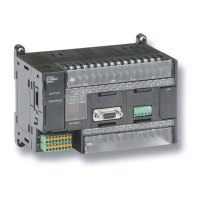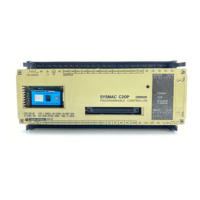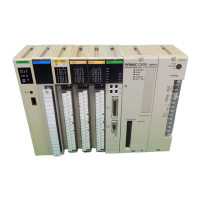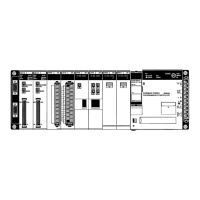694
Double-precision Floating-point Instructions (CS1-H, CJ1-H, CJ1M, or CS1D Only) Section 3-16
Precautions The base data (B to B+3) and the exponent data (E to E+3) must be in
IEEE754 floating-point data format.
3-16-21Double-precision Floating-point Input Instructions
Purpose These input comparison instructions compare two double-precision floating
point values (64-bit IEEE754 format) and create an ON execution condition
when the comparison condition is true.
These instructions are supported by CS1-H, CJ1-H, CJ1M, and CS1D CPU
Units only.
Note Refer to
3-7-1 Input Comparison Instructions (300 to 328) for details on the
signed and unsigned binary input comparison instructions and
3-15-24 Sin-
gle-precision Floating-point Comparison Instructions
for details on single-pre-
cision floating-point input comparison instructions.
Ladder Symbol
Variations
Applicable Program Areas
Operand Specifications
Underflow Flag UF ON if the absolute value of the result is too small to be
expressed as a double-precision floating-point value.
Negative Flag N ON if the result is negative.
OFF in all other cases.
Name Label Operation
S
1
S
2
S1: Comparison data 1
S
2: Comparison data 2
Symbol & options
Variations Creates ON Each Cycle Comparison is True Input compari-
son instruction
Immediate Refreshing Specification Not supported
Block program areas Step program areas Subroutines Interrupt tasks
OK OK OK OK
Area S
1
S
2
CIO Area CIO 0000 to CIO 6140
Work Area W000 to W508
Holding Bit Area H000 to H508
Auxiliary Bit Area A000 to A956
Timer Area T0000 to T4092
Counter Area C0000 to C4092
DM Area D00000 to D32764
EM Area without bank E00000 to E32764
EM Area with bank En_00000 to En_32767 (n = 0 to C)
Indirect DM/EM
addresses in binary
@ D00000 to @ D32767
@ E00000 to @ E32767
@ En_00000 to @ En_32767
(n = 0 to C)

